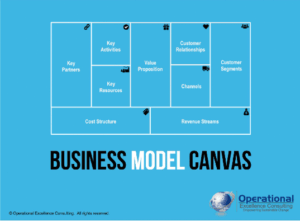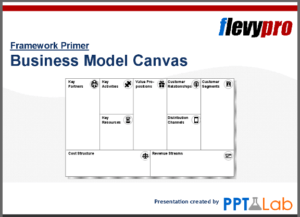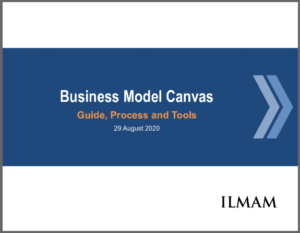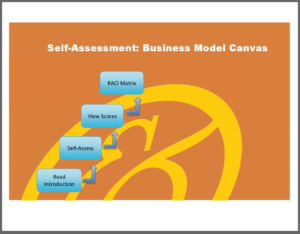Choosing Channels is the third block in the business model canvas. This post examines what Channels are, why they are important to the business model, and strategic and project management impacts.
Understanding Channels in the Business Model Canvas

Channels sits on the Value Creation side of the Business Model Canvas. It is preceded by the choice of customer segment(s) and development of a value proposition.
The Business Model Framework is largely credited to Alexander Osterwalder and Strategyzer. To supercharge your understanding of business models, I recommend his book, “Business Model Generation: A Handbook for Visionaries, Game Changers, and Challengers”.
The purpose of Channels is to provide the ways and means to communicate and deliver value to the customer. Hence, there are two types of channels: communication and distribution:
- Communication Channels – These are the means of getting the messages out to potential customers and influencers. From a marketing perspective, it means ‘seeding’ potential customers in the market with exposure to ideas about the products and services. From a selling perspective, it means directly engaging with customers through the most efficient and effective means.
- Distribution Channels – These are the means of getting the products and services to the customers. They can be physical or virtual, or a combination, as required. They can be directly for the business, or through intermediaries.
The choices made regarding both types of channels will work to the degree that they map clearly to the value proposition.
The key to developing and maintaining effective Channels is to document assumptions and hypotheses so that you can start testing with customers. Even when the business and market are mature, it is important to invest some effort and resources in this same approach to keep ahead of changes and build efficiencies.
One of the key questions regarding Channels is *How much does it cost to acquire a customer?” And there are many related questions at each phase of building Channels to customers.
Channels and the Customer Experience

There are five commonly cited phases that Channels must support in acquiring and serving customers. Each phase provides a new opportunity to build a strong relationship with each customer.
- Awareness – This first phase is marketing oriented – making people aware of your products and services and what they can do for them.
- Evaluation – This phase is an opportunity for the business to introduce means for customers to evaluate their products and services. This could include surveys, reviews, and comparisons.
- Purchase – This is where the customer has been made aware, provided the opportunity to evaluate, and has made the decision to buy. The buying experience can include self checkout, online ordering, filling out order forms, or other means,
- Delivery – How will the customer receive what they purchased? Will they leave a store with it, receive a delivery, or download it? Will it be assembled, or require work on their part?
- After sales – This includes support during, immediately after, and on an ongoing basis for the products and services delivered. This phase ideally includes the means to obtain references and recommendations from satisfied customers.
Each of these phases is part of the customer experience – what happens to customers as they go through their ‘customer journey’. The business needs to provide the most effective Channels to help customers get through this process.
Strategy: Choosing the Optimal Channels
In Michael Porter’s work on the value chain, he advances the idea that key activities are as important as product features for making an offering unique. This is also the way it works in optimizing Channels as part of the business model.
—————————————-
I recommend these strategy resources on FlevyPro (paid links):
| Business Model Canvas 140-slide PowerPoint deck and supporting PDF  |
| Business Model Canvas 22-slide PowerPoint deck  |
| Business Model Canvas: Guide, Process and Tools 43-slide PowerPoint deck  |
| Business Model Canvas – Implementation Toolkit Excel workbook and supporting ZIP  |
—————————————-
Here are the kinds of options that are available for communication and distribution channels:
- Marketing – Marketing is about communicating to potential customers about the product and services. Real Channels include trade shows, offline advertising, events, and direct mail. Virtual channels include blogs, social media, email marketing, videos, webinars, internet advertising, and web-based education
- Selling – Selling is direct engagement with customers. Real Channels for selling include a direct sales force, distributors, manufacturers representatives, brick and mortar retail stores (own and partner), Value Added Resellers (VAR), Original Equipment manufacturers (OEM), telephone sales, wholesalers, agents and brokers, merchants who represent the product, and resellers who bundle products and services. Virtual Channels for selling include web based versions of many of the real channels, websites, virtual stores (own and partners), and affiliate sales.
- Delivery and Customer Support – For delivery, the question is how to get the product to customers. One approach is to think about it from the idea of a ‘platform’. Support includes providing a website with info, documentation, FAQs, user groups and forums (i.e. FB groups), and online chat. Other more active means include phone support – automated and personal – and on site support.
The pros and cons of various options will depend upon the situation. Most will be driven by considerations of cost and value – as seen by the company and customer respectively.
Choices will likely change over time, depending on where the company is in the business development life cycle. For example, direct sales in the startup phase can help the business to learn a lot about how the customer responds to various aspects of the product and service. This can change, as that knowledge stabilizes. For example, a business in the growth phase may be more interested in less costly and less direct touch ways of capturing customers to reduce cost and disengage from the limitation of resources. It may choose an approach that can scale.
The following are some criteria for selecting a channel. The criteria illustrate the advantages and disadvantages of the options.
- Number of customer segments – How much can we handle now with our resources? Should we consider multiple business models aligned with different segments?
- Investment required – What will it take to get this started? What will it take to maintain it at the level required?
- Product standardization/customization – To what extent does each sale need to allow customer choice? Could ‘mass customization‘ – a hybrid of standardization and customization – provide a solution?
- Open vs closed communications channels – How much control, or access, do we have to the means for communicating with our customers? Are there proprietary, cost, or other barriers to gaining access?
- Length of sales cycle – How long might it take, on average, from first contact to sale? How much effort and investment is needed throughout that sales cycle?
- Integration of channels – Are there synergies among any of the channels? Can two or more channels be coordinated to enhance the message, add value, or decrease cost?
- Compatibility with customer routines – How do each of the channels align with where the customers are, what they are doing, and what they are thinking?
It is helpful to challenge assumptions and lines of thinking throughout the process to identify and implement the best Channels possible.
Project Management: Delivering the Channels Effectively
Project success will depend, in large part, on choosing the right projects. Much of that happens with strategic choices, but much also with building the portfolio of projects and then implementing them against the strategic objectives.
—————————————-
I recommend these PM templates (paid link):

—————————————-
Here are some keys for delivering strategic Channels effectively:
- Project portfolio – There could be just one project – or many. That decision is driven by phase of development of the business. The character of the portfolio will differ for a startup phase business vs growth or mature phases. The portfolio might initially consist of one, or a few, lean and agile learning projects, followed later by a growing number of projects to implement aspects of the Channel strategy.
- Choices made – Project managers need to be clear on the strategic decision drivers – why the project is being undertaken, and what the specific objectives are. What metrics might support achievement of the Channel objectives for the project? A marketing project might have the goal of learning about customer preferences, and needs to be measured based on progress within a specific timeframe
- Methodology – Early in the development of communication and distribution channels, the business is learning. Maintaining flexibility with a lean or agile innovation approach is probably best. As the business grows and these channels are more established, supporting projects can be managed more deliberately, probably with a hybrid approach. In mature phases of business development, projects will tend more toward a waterfall approach.
- Integration of channels – Special projects may be needed to bridge from one channel to another – to integrate aspects of each to build synergistic effects. Metrics and timetables need to be developed and monitored closely to progress toward the integration goals.

Projects will be needed to achieve Channel strategy objectives. The right PMs and team are needed to sync with strategic Channel goals and deliver on the product and service development, processes and systems needed.
You can quickly and conveniently work through the Supporting Channels and other components of the Business Model Canvas with the Lucidchart Business Model Canvas template (Try for free) – recommended!
Conclusion and Resources
Can you share any experiences with projects implementing Channels as art of the business model?
To supercharge your understanding of business models, I recommend “Business Model Generation: A Handbook for Visionaries, Game Changers, and Challengers” by Alexander Osterwalder.
See a startup centric explanation of Channels: “Business Model Canvas Channels – Go-to-market strategy: Sales, Marketing and Customer Support”, by StartupSOS, Steve Morris:
